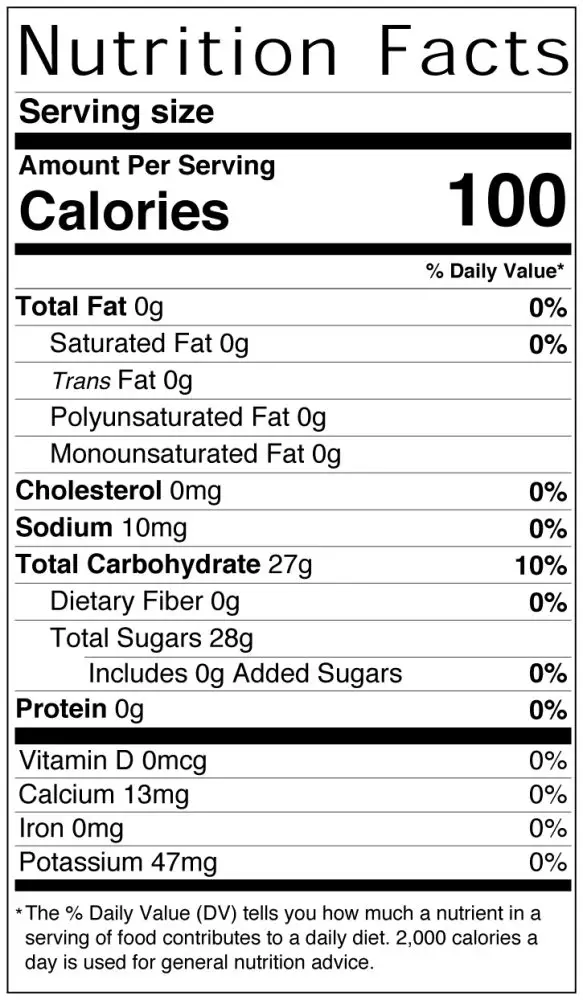Fairlife Milk Nutrition Label
What’s in a Fairlife Milk Nutrition Label?
If you’ve ever picked up a bottle of Fairlife milk at the grocery store, you may have noticed that the nutrition label is a bit different from regular milk. Fairlife milk, known for its ultra-filtered and high-protein qualities, has gained popularity among health-conscious consumers. But what exactly does the Fairlife milk nutrition label tell us? Let’s dive into the details and explore the components of this unique milk product.
Understanding the Fairlife Milk Nutrition Label
When you take a closer look at the Fairlife milk nutrition label, you’ll notice a few key differences that set it apart from traditional milk labels. Here’s a breakdown of the important information you’ll find:
1. Serving Size and Calories: The nutrition label indicates the serving size of Fairlife milk, typically 1 cup (240 ml), and the number of calories in one serving. Fairlife milk generally contains fewer calories than regular milk, making it a good option for those watching their calorie intake.
– Example: A cup of Fairlife milk typically contains around 80-120 calories, depending on the variety.

2. Protein Content: Fairlife milk is known for its high protein content. The nutrition label clearly displays the amount of protein in each serving. Protein is essential for building and repairing tissues and is an important component of a healthy diet.
– Example: Fairlife milk typically contains around 12-13 grams of protein per cup, which is almost twice as much as regular milk.
3. Fat and Saturated Fat: Like traditional milk, Fairlife milk comes in different fat variations, ranging from fat-free to whole. The nutrition label specifies the total fat content and the amount of saturated fat in each serving. It’s important to keep an eye on these values, especially if you’re watching your fat intake.
– Example: A cup of Fairlife whole milk may contain around 6 grams of total fat, with 3.5 grams being saturated fat.
4. Sugar Content: Fairlife milk typically contains less sugar than regular milk. The nutrition label displays the total sugar content per serving, including any added sugars. This makes it a popular choice for those looking to reduce their sugar intake.
– Example: Depending on the variety, a cup of Fairlife milk may contain around 6-8 grams of sugar.
5. Vitamins and Minerals: Fairlife milk is fortified with essential vitamins and minerals to enhance its nutritional value. The nutrition label highlights the presence of key nutrients, such as calcium, vitamin D, vitamin A, and potassium.
– Example: Fairlife milk provides up to 50% more calcium than regular milk, making it a great source of this bone-building mineral.*
6. Lactose Content: Fairlife milk is lactose-free, which means it can be enjoyed by individuals who are lactose intolerant. The nutrition label specifies the absence of lactose, making it clear that this milk alternative is a suitable option for those with lactose sensitivity.
Frequently Asked Questions
Q: Is Fairlife milk better than regular milk?
A: Fairlife milk offers certain advantages over regular milk, such as higher protein content and less sugar. However, the choice between Fairlife milk and regular milk ultimately depends on individual dietary needs and preferences.
Q: Does Fairlife milk taste different from regular milk?
A: Fairlife milk has a slightly different taste compared to regular milk. Some people describe it as creamier and smoother. However, taste preferences can vary, so it’s best to give it a try and see how you like it.
Q: Is Fairlife milk suitable for individuals with lactose intolerance?
A: Yes, Fairlife milk is lactose-free, making it a suitable option for individuals with lactose intolerance. It contains an enzyme called lactase, which helps break down lactose and makes it easier to digest.
Q: Can I use Fairlife milk in recipes that call for regular milk?
A: Absolutely! Fairlife milk can be used in place of regular milk in various recipes, including baking, smoothies, and cooking. It provides the same creamy texture and nutritional benefits.
Final Thoughts
The Fairlife milk nutrition label provides valuable information about this unique milk product. With its high protein content, lower sugar content, and lactose-free nature, Fairlife milk has become an appealing choice for individuals seeking an alternative to regular dairy milk. While it may not be suitable for everyone, it offers a nutritious and tasty option for those looking to enhance their diet and lifestyle. So next time you’re at the grocery store, give Fairlife milk a try and experience the difference for yourself!







